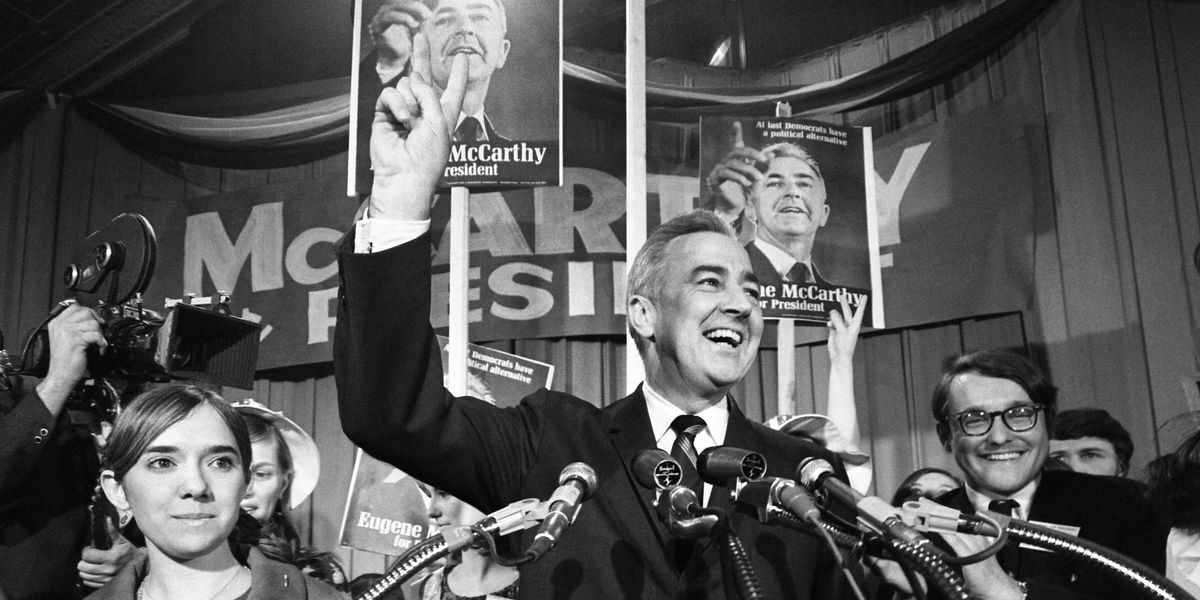
A simplistic 18th century math formula, not the latest complex Big Tech algorithm, is the greatest growing threat to our democracy. This formula got scratched out using a quill pen in 1787. Then it was used in 1789 to elect George Washington as our first president. This enduring presidential algo is found in Article II, Section I, of the U.S. Constitution.
The term “Electoral College” doesn’t appear there. But the basic math does. Each state has two senators. This equals two electoral votes, regardless of population. In addition, a state gets representatives in Congress based on population. Each representative equals one additional electoral vote. The District of Columbia is allocated three electors. The Electoral College majority next year will be 270.
In the two-party era, four presidential candidates finished second in the popular vote but won a majority of the electors and thus the White House: Republican Rutherford Hayes (1876), Republican Benjamin Harrison (1888), Republican George W. Bush (2000) and Republican Donald Trump (2016).
Yet these elections failed to sufficiently highlight the Electoral College’s danger to our democracy. We believe the 2020 presidential results should be a wake-up call.
Trump’s strategy for winning a third straight GOP nomination is therefore rational, not crazy as his detractors claim. Do whatever it takes to win over GOP primary voters, then hope the Electoral College math works in his favor.
But this first requires an honest discussion about former President Trump. He says he is the greatest Republican vote getter of all time. So do many of his supporters.
Fifteen GOP incumbents were nominated for a new term. Nine won reelection, all winning a popular vote majority. Seven by landslide margins. Only six, including Trump, were rejected by voters. Of these six, Trump is the only one to have received less than 47 percent of the popular vote every time he ran.
Trump counters by saying he did hugely better in 2020 but got cheated. Yet Trump’s own facts belie this claim. He correctly says he won 20 states in 2016 by a margin of 10 percent or greater and then again in 2020. He doesn’t claim any fraud in these states. Indeed, there were well over 3 million more votes in these top Trump states. Yet his combined winning margins were roughly the same. Thus, the obvious question: If he did so much better in 2020 than in 2016, why isn’t this reflected in his best states?
The answer is clear. Eight presidential elections have taken place since America entered the post-Cold War era. In chronological order, the GOP nominee received the following popular vote percentages: 37.5 percent, 40.7 percent, 47.9 percent, 50.7 percent, 45.6 percent, 47.1 percent, 45.9 percent and 46.8 percent.
Trump’s alleged political prowess is actually in line with the average GOP candidate. Democrats won the popular vote in the latest four elections by the following margins: 9.5 million, 5.0 million, 2.9 million, 7.1 million. Trump’s losing margin increased by over 4 million in 2020. The biggest majority chunks came in Hillary Clinton’s 14 strongest jurisdictions. These voters aren’t going for Trump in 2024. This means: To win a popular vote majority, Trump needs 7 million more votes in the remaining closely contested states. This is highly implausible without a Democratic meltdown.
Trump’s strategy for winning a third straight GOP nomination is therefore rational, not crazy as his detractors claim. Do whatever it takes to win over GOP primary voters, then hope the Electoral College math works in his favor.
In 2020, Joe Biden won 51.2 percent of the vote. This is a higher percentage than Presidents Truman in 1948, Kennedy in 1960, Nixon in 1968, Carter in 1976, Reagan in 1980, Clinton in 1992 and 1996, Bush in 2000 and 2004, Obama in 2012 and Trump in 2016.
And yet: Trump, twice a popular vote loser, almost carried the Electoral College. He lost Arizona by 0.3 percent, Georgia by an even smaller 0.2 percent and Pennsylvania by a mere 1.2 percent. He carried all of them in 2016. A switch of slightly more than 52,000 votes in 2020 in those states would have given Trump four more years.
Guaranteed: Trump will not win the popular vote in 2024. If nominated, he will become the first presidential candidate in history to be so rejected three consecutive times by the American voting people. Yet he might get back into power, despite never having won the popular vote, much less a majority, in any election.
A House divided against itself cannot stand, warned Lincoln. The states are now split on whether to retain the Electoral College or move toward electing the president by a popular vote majority.
We could be headed for a constitutional crisis in 2024 — caused not by computer-driven artificial intelligence but by a math formula cooked up on a hot day in Philly by individuals who were probably just trying to get a consensus so they could go home.
This post was originally published on Common Dreams.
